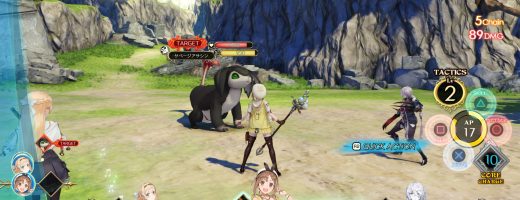My Time at Portia E3 Impression 2
Similar to other simulation-RPGs like Stardew Valley, Pathea Games’ My Time at Portia is a game whose primary purpose seems to be to give the player a more relaxing experience, as it does away with things like tense combat or dramatic plots. Even the brief twenty minutes I was able to play were enough to work on and complete several tasks, ticking boxes on my virtual to-do list as I went, which, as we all know, is always a satisfying experience.
The game starts as you, after creating your character, arrive on the island of Portia. As the boat drops you off and you’re greeted by the welcoming committee, you learn that your purpose here is to take over your late father’s workshop and to restore it back to its former glory. You do this via a combination of fixing up the actual workshop, including personalizing it with furniture and decorations, and turn it back into a thriving business by taking on and completing requests from the island’s natives. Along the way, a boatload of other tasks and activities become available to constantly keep you busy, such as building relationships, photography, and quests to complete.
The first thing I noticed was the art style and music, which both have a calming and pleasing effect on the player. There’s no way to mistake My Time of Portia‘s soothing intentions right from the outset. The first couple of tasks you’re given revolve around learning the game’s basic crafting mechanics, which include crafting individual components at a worktable and combining them at an assembly station to make larger and more complex creations. Luckily, you’re quickly given your grandfather’s old notebook, which includes helpful crafting recipes and diagrams to get you through at least the opening stages.
There were a few things I missed out on, due to having not nearly enough time to dig into each of the game’s gameplay and narrative elements. I am curious how the dungeon-diving is implemented. From what I could gather, a number of caves and other dungeons exist to provide players access to different kinds of materials they’ll need to create newer and better items. The first of these is free of monsters, but later stages will feature foes to contend with, so there is a combat element eventually. Unfortunately, entering even the first dungeon requires a minimum threshold of gold, which I didn’t spend enough time gathering. In the meantime, basic ingredients like wood and stone can easily be obtained anywhere in the colorful overworld.
There are also story elements that will drive players further into the experience. My Time at Portia isn’t meant to go on indefinitely, and the main story does eventually end. Surprisingly, the game is actually a post-apocalyptic game of sorts, despite its cheerful aesthetic. Over the course of the game, the player will actually stumble across relics and information pertaining to the “old world,” and there is a conflict between the religious and scientific factions of Portia, who both have differing opinions how and if this information should be treated. Of course, none of this plays into the game’s introductory stages at all, so to witness it I’d have to play quite a bit more.
My Time in Portia was a pleasant surprise, as it isn’t my normal cup of tea. I felt calm and relaxed, but immediately drawn onward by curiosity to see what comes next. The quick turnaround, at least of the first handful of tasks, gives it that “just one more quest” quality. At the same time, being able to play in short bursts and still accomplish something will lend itself well to the Switch version, while the on-screen inventory is likely easier to handle using a keyboard. To that end, the game is currently available on Steam Early Access, but will see a full release later this year on PlayStation 4, Xbox One, Switch, and PC.









Recent Comments